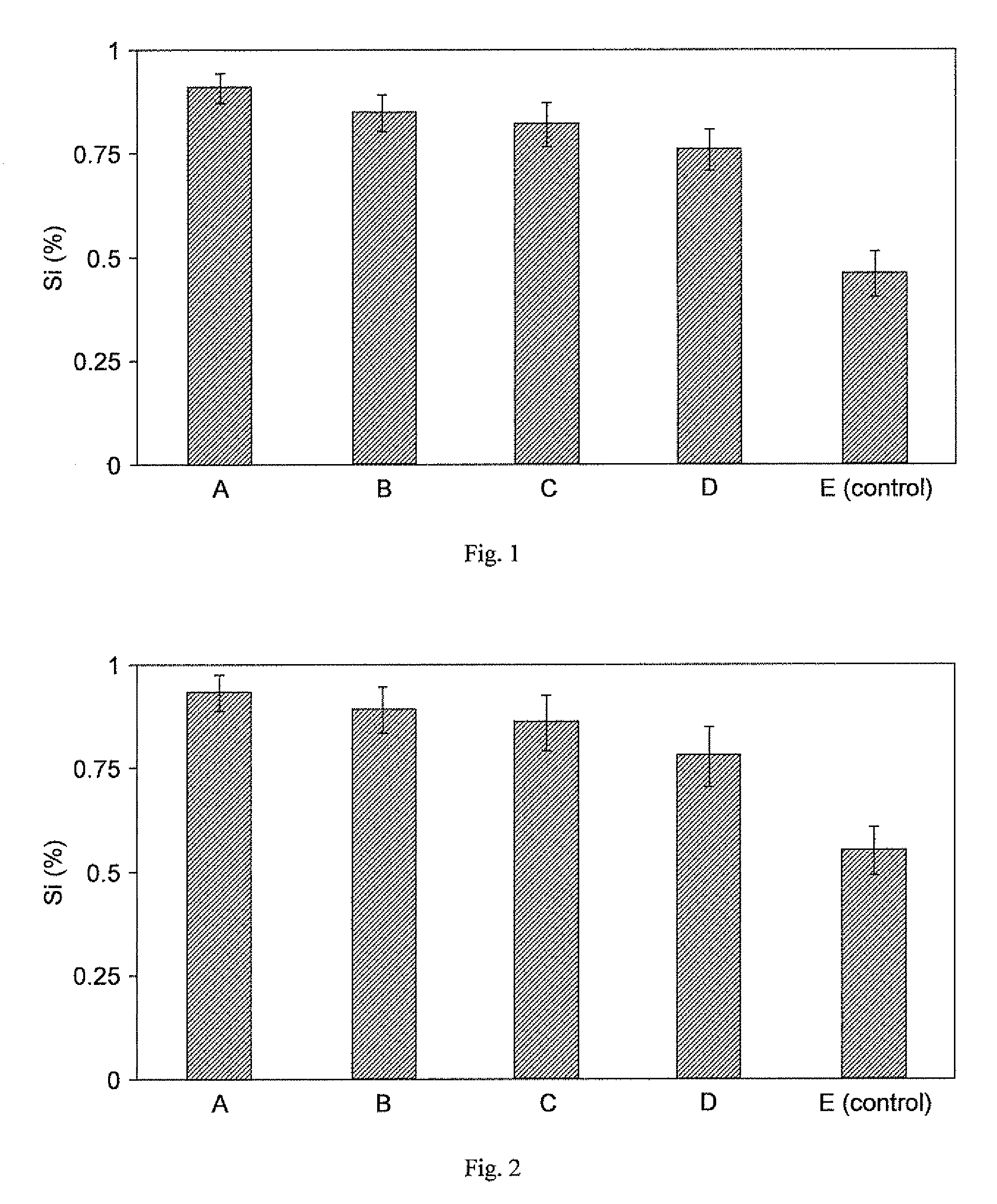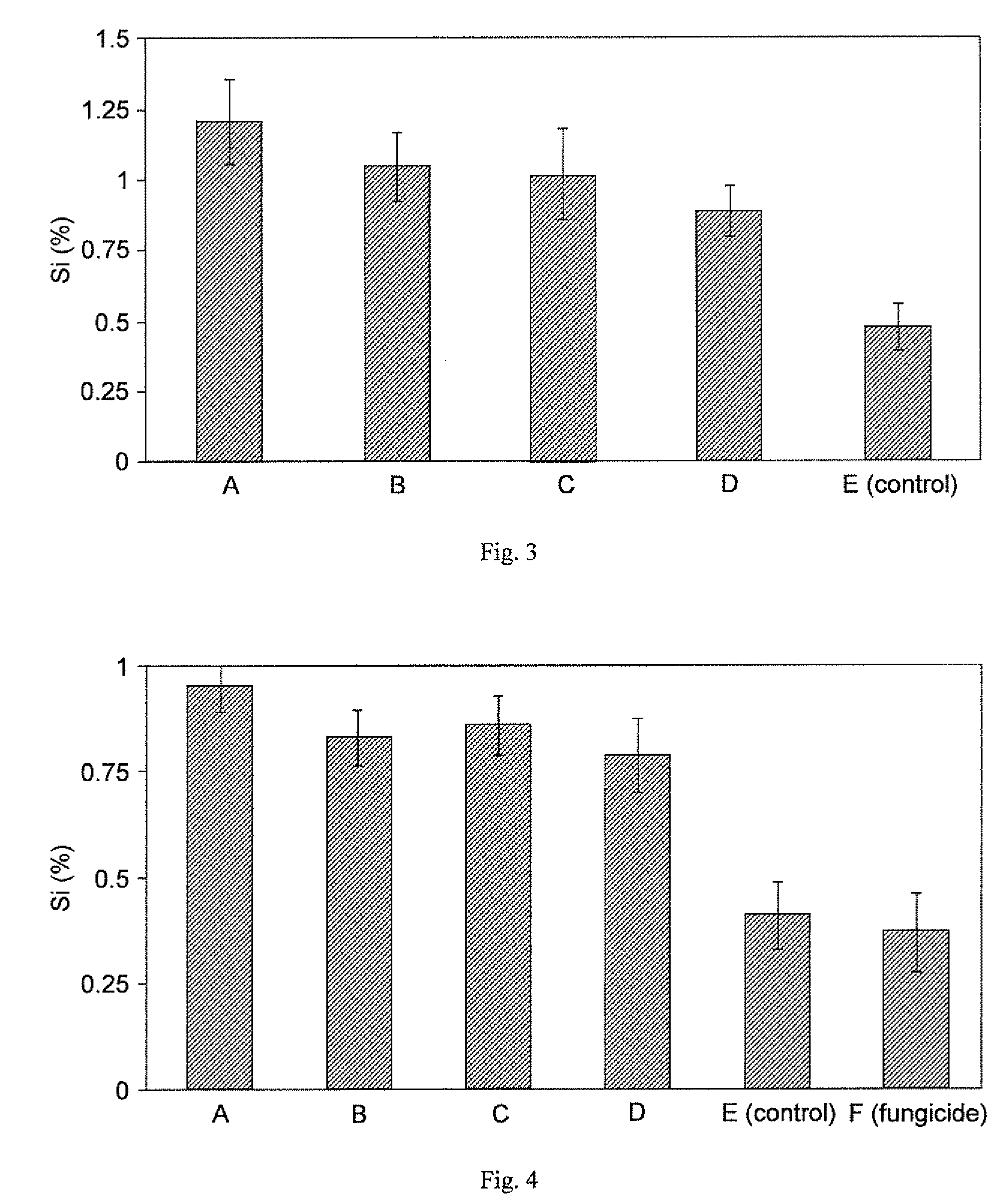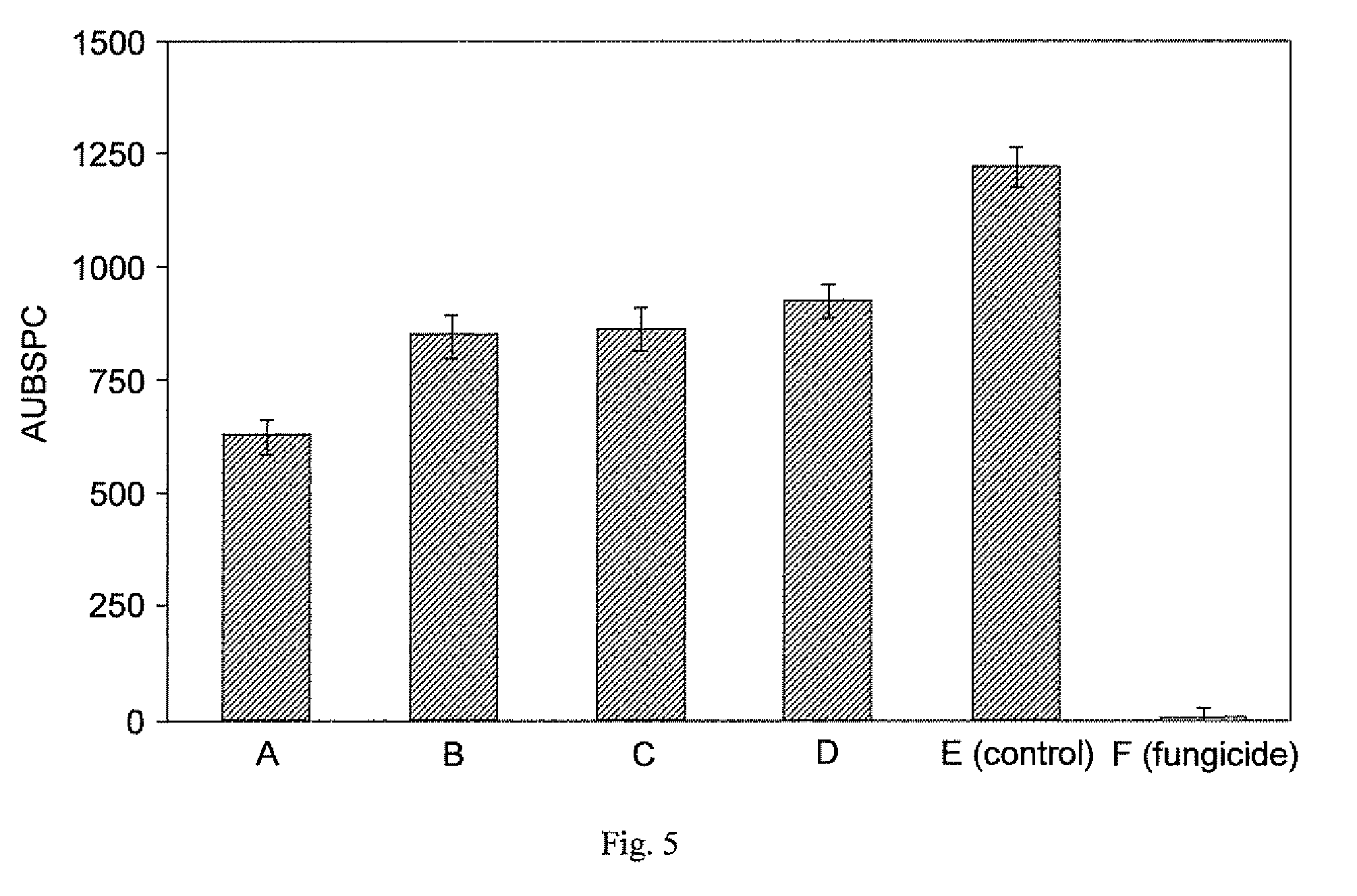Foliarly applicable silicon nutrition compositions & methods
a technology of plant silicon and composition, applied in the field offoliarly applicable plant silicon nutrient composition, can solve the problems of outperforming conventional chemical fertilizers in container soil gardens, and achieve the effect of reducing the susceptibility of plants
- Summary
- Abstract
- Description
- Claims
- Application Information
AI Technical Summary
Benefits of technology
Problems solved by technology
Method used
Image
Examples
example 1
Movement of Si from Foliarly Applied Materials into Leaf Tissue of Rice
[0117]Seeds of lsil mutant rice (low silicon rice 1, deficient in active Si uptake) were surface sterilized in 10% NaOCl for 1.5 min, rinsed in sterilized water for 3 min, and germinated on distilled water-soaked germitest paper in a germination chamber at 25° C. for 6 days. Germinated seedlings were transferred to plastic containers with one-half-strength nutrient solution for two days. After this period, plants were transferred to new plastic containers with fall-strength nutrient solution. The nutrient solution, without aeration, was changed every 4 days. The pH was checked daily and kept at approximately 5.5 by using NaOH or HCl (1 M) when needed. The nutrient solution used in this study was composed of 1.0 mM KNO3, 0.25 mM NH4PO4, 0.1 mM NH4Cl, 0.5 mM MgSO4.7H2O, 1.0 mM Ca(NO3)2.4H2O, 0.3 μM CuSO4.5H2O, 0.33 μM ZnSO4.7H2O, 11.5 μM H3BO3, 3.5 μM MnCl2.4H2O, 0.1 μM (NH4)6Mo7O24, 25 μM FeSO4.7H2O and 25 μM EDTA...
example 2
Movement of Si from Foliarly Applied Materials into Leaf Tissue of Rice
[0128]Rice lsil mutant seedlings were grown exactly as in Example 1, using the same nutrient solution. The trial consisted of ten foliar spray treatments, with compositions A-E as described in Example 1, each sprayed once, or twice with the second spraying 48 hours after the first.
[0129]The trial was arranged in a completely randomized design with five replications. Each experimental unit consisted of one plastic container with 5 liters of nutrient solution and four rice plants. The experiment was repeated once. Compositions A-E were applied to all leaves of each plant as foliar sprays, in the case of A-D at 2% by volume concentration. Spray treatments were applied once or twice, at an interval of 48 hours. The fourth leaf on the four tillers per plant, including the main tiller, were sprayed using a DeVilbiss No. 15 atomizer. The other leaves of the plants were protected during spraying with a plastic bag. The b...
example 3
Effect of Foliar Application of Si Compositions on Brown Spot of Rice
[0132]Rice lsil mutant seedlings were grown exactly as in Example 1, using the same nutrient solution. The trial consisted of six foliar spray treatments, with compositions A-E as described in Example 1 and with composition F: fungicide (diphenoconazole, 1.5 ml / liter).
[0133]The trial was arranged in a completely randomized design with five replications. Each experimental unit consisted of one plastic container with 5 liters of nutrient solution and four rice plants. The experiment was repeated once. Compositions A-F were applied to rice leaves as foliar sprays 24 hours before inoculation with the brown spot pathogen Bipolaris oryzae. Solutions of compositions A-D were prepared at 2% concentration. The fungicide (composition F) was prepared at 1.5 ml / liter concentration. Plants at the fifth leaf tiller growth stage were sprayed using a DeVilbiss No. 15 atomizer. The base of the plants was covered during spraying to ...
PUM
 Login to View More
Login to View More Abstract
Description
Claims
Application Information
 Login to View More
Login to View More - R&D
- Intellectual Property
- Life Sciences
- Materials
- Tech Scout
- Unparalleled Data Quality
- Higher Quality Content
- 60% Fewer Hallucinations
Browse by: Latest US Patents, China's latest patents, Technical Efficacy Thesaurus, Application Domain, Technology Topic, Popular Technical Reports.
© 2025 PatSnap. All rights reserved.Legal|Privacy policy|Modern Slavery Act Transparency Statement|Sitemap|About US| Contact US: help@patsnap.com



